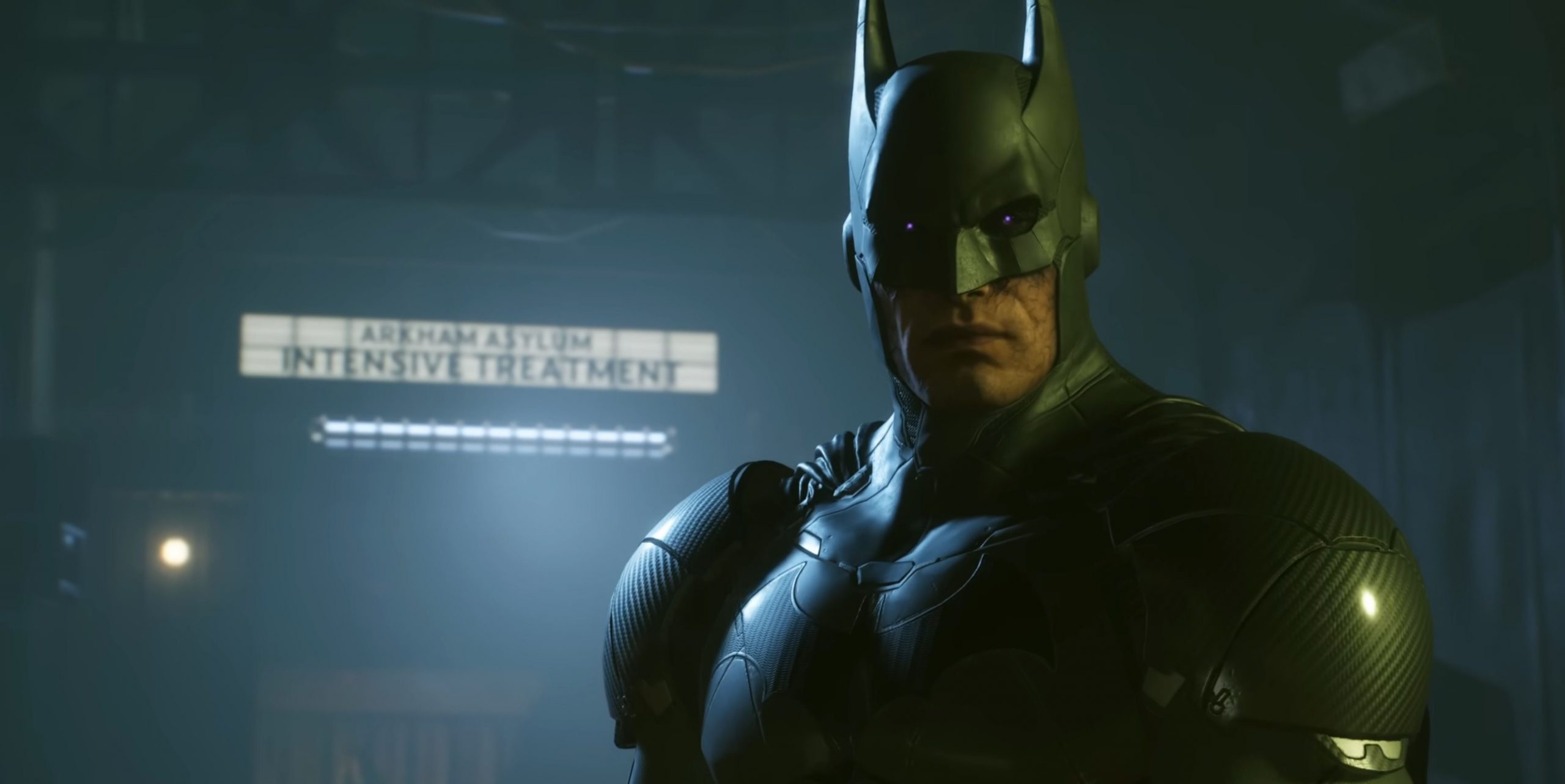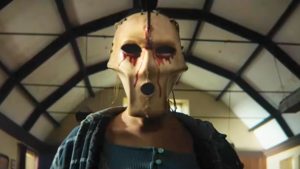
This article contains spoilers for Suicide Squad: Kill the Justice League.
It’s been nine years since the release of Batman: Arkham Knight, but developer Rocksteady Games’ highly-anticipated new project (Suicide Squad: Kill the Justice League) is finally here. While the game has already been the subject of many controversies and debates in the years leading up to its release, Kill the Justice League‘s “treatment” of Batman has become an especially heated topic ever since the game launched via early access earlier this week.
Before we get into all of that, though, I want to reiterate the message you see above. This article contains full spoilers for a particular scene in Suicide Squad: Kill the Justice League and some other in-game events relevant to that scene. If you want to experience the game for yourself, please turn back now.
If, however, you are seeking spoilers or you are simply looking for a place to discuss this emerging bit of discourse, then let’s dive in…
What Happens to Batman In Suicide Squad: Kill the Justice League?
As the name of the game implies, Suicide Squad: Kill the Justice League sees you play as the Suicide Squad (Captain Boomerang, Deadshot, Harley Quinn, and King Shark) as they try to kill the members of the Justice League. More than just a simple case of villains being villains, the Suicide Squad is following orders from Amanda Waller who has essentially put a hit on the Justice League after discovering that many of the group’s primary members have been brainwashed by Brainiac. Now out of their minds and out of control, the Justice League is threatening to help Brainiac take over our world (possibly multiple worlds) if the Suicide Squad can’t take them down.
That of course brings us to Batman. Though Batman is not featured quite as prominently throughout Kill the Justice League as Superman and some other characters are, your relatively few encounters with Batman are certainly memorable. He’s almost treated like a slasher in a horror movie for much of the game. Those encounters eventually lead to a boss battle against Batman who goes so far as to deploy a heavy dose of fear toxin that sends the Suicide Squad on a particularly bad trip. When the Suicide Squad battles Batman, they see him as a kind of supersized fire demon who feels closer to a Final Fantasy boss than the caped crusader. It’s actually a pretty clever fight from a visual and thematic perspective. Of course, the Suicide Squad ultimately prevails.
However, Batman doesn’t die at that moment. The character’s actual death occurs a little later on when the Suicide Squad places Batman’s beaten and broken body on a bench. Batman tries to get some last-minute verbal jabs in, but he’s cut off by Harley Quinn who spends a few minutes saying some of the things she always wanted to say to Batman. After Batman interrupts what he refers to as Harley’s “bad standup routine,” Harley pulls out a gun and shoots Batman in the head. It’s the last time we see him in the game.
Is Batman Really Dead In Suicide Squad: Kill the Justice League?
Just in case it needs to be said, Kill the Justice League is obviously not the last time we’ll see Batman in a video game or anywhere else. For that matter, it doesn’t have to be the last time we see Batman in a Rocksteady game. Theoretically, the company could choose to do something else with a different version of the character from another universe. It’s unlikely, but Kill the Justice League does feature variants of characters from other DC universes, so the option is always there.
However, Suicide Squad: Kill the Justice League strongly suggests that Batman is indeed dead in the Arkhamverse. The game offers no substantial hints that the character’s death is anything less than the finale it appears to be. There is also no giant retcon at the end of the game that brings everything back to normal.
In the interest of fairness, though, there are scenes in the game that show other heroes (notably Superman and The Flash) exhibiting some kind of regenerative abilities while under the effect of Brainiac’s delusions. However, the game seems to suggest that is the result of their innate abilities rather than their current condition, and Batman does not have those kinds of superheroic regenerative abilities. Furthermore, it’s theoretically possible there is a hidden ending or detail in the game that suggests an “everything is fine” return to normalcy may still occur, but nothing like that has been discovered yet. For that matter, the next time someone brings a seemingly “dead” dead comic book character back from the grave via questionable means certainly won’t be the first.
As it stands, though, if the Arkhamverse does live on after Kill the Justice League, it will do so without Batman (or at least the version of the character we knew). And that’s where the controversies start…
The Gamers Against The Entire “Kill the Justice League” Concept
In the months leading up to Kill the Justice League’s release, a growing contingent of gamers expressed outrage over the upcoming title’s very premise. Those fans made it clear that they had no interest in playing a game where they were asked to kill the members of the Justice League.
Yes, that means that some gamers out there simply love the Justice League members so much that they can’t stomach the thought of having to kill their favorite heroes. If you’re surprised that some have an irrational attachment to their favorite fictional characters, then I’d like to welcome you to your first day on the internet. Leave while you can.
However, the bigger controversy here isn’t that you have to kill the Justice League but rather that you have to play as the Suicide Squad. To be more specific, much of that outrage seems to stem from the fact that some would have preferred to play as the Justice League rather than the Suicide Squad trying to take down the Justice League.
While some of those desires can be attributed to the simple lack of notable Justice League games we’ve received over the years, it’s also worth noting that some very early rumors suggested that developer Rocksteady’s first post-Batman: Arkham project was going to be either a Superman game or a game where you played as the Justice League. While most of those rumors have since been disproven, the idea of the studio working on one of those projects took root long ago and excited quite a few DC fans. When it was announced that the Justice League would be in Rocksteady’s next game but as villains rather than playable heroes…well, you could sense a general twinge of disappointment that only grew stronger as more information about that game was revealed.
As for the Suicide Squad, I suppose you could argue that some of those upset fans would have been happier playing as Batman in a game where he battles the rest of the Justice League in a kind of modified Tower of Babel narrative. However, there are more popular concerns regarding the nature of Batman’s death that have little to do with the fact that Kill the Justice League doesn’t let you play as the dark knight…
How Batman’s Death In Kill the Justice League Fits Into the Arkhamverse
Suicide Squad: Kill the Justice League is a continuation of the “Arkhamverse,” which is the name popularly given to the corner of the DC multiverse that Rocksteady previously built in Batman: Arkham Asylum, Batman: Arkham City, and Batman: Arkham Knight. Interestingly, the 2013 spin-off title Batman: Arkham Origins (which was developed by WB Games Montréal) is largely ignored in Kill the Justice League, but that is a topic for another day.
For the most part, the reception to the Arkhamverse has been overwhelmingly positive so far. While that speaks to the quality of the games in the Arkham series and how they helped revolutionize 3D action-adventure titles, many fans (especially longtime DC/Batman fans) are practically obsessed with those games’ take on Batman and the other major characters in the Batman universe. Even if you’re not one of those fans who believe the Arkham games are among the best Batman stories ever, it’s significantly easier to argue that they are some of the best multimedia Batman stories we’ve been treated to in the post-Nolan era.
When it was revealed that Kill the Justice League would be set in the Arkhamverse and advance the continuity of those games, fans wondered how that was going to work regarding Batman himself. After all, Arkham Knight (the final game in the official Arkham trilogy) featured multiple endings, each of which teased a slightly different fate for the character. The base ending strongly suggested that Batman faked his own death after Scarecrow revealed his secret identity to the world, but the game’s “secret” ending implied that Batman eventually uses Scarecrow’s fear toxins to forge a more terrifying version of himself that is no longer “held back” by the need to maintain the Bruce Wayne persona.
That’s what makes Kill the Justice League’s place in the Arkhamverse inherently awkward to some degree. Some were entirely satisfied with Arkham Knight’s ending(s) or were at least fine with the idea that Batman’s future was meant to be largely ambiguous. Though you could certainly argue that Batman’s use of fear toxins in Kill the Justice League suggests that the prior interpretation of Arkham Knight’s secret ending is being treated as canon, Kill the Justice League doesn’t focus on Batman enough to offer a substantial continuation of that plot point or any other previously established Arkham narratives. So, those left wanting more may not be entirely satisfied, and those who wanted things to be left as they were are also at higher risk of being disappointed.
The bigger point of contention here may end up being the nature of Batman’s Kill the Justice League death. Simply put, some of those who love the Arkhamverse and its version of Batman aren’t happy that the character’s final moments are so unceremonious (if intentionally so). Again, there is a fairly good chance that this is the last we’ll see of Batman in a canonical Rocksteady game. Whether you wanted to see Batman’s story in that universe continue or not, it’s fair to say this isn’t the way many people envisioned that continuation and apparent conclusion happening.
However, it’s important to note that not everyone is upset by Batman’s death scene in Kill the Justice League. Some actually see it as a pretty fitting end for the character within the context of that specific game. Kill the Justice League’s developers were clearly committed to the core concept of their title, and there is something to be said about how Batman’s death fulfills the central promise of killing the Justice League.
You could also argue that Arkham Knight set up Batman as a character that was becoming increasingly unhinged, though that doesn’t really play into the whole “brainwashed” angle that Kill the Justice League revolves around. The bigger argument there seems to be that Rocksteady essentially told the Batman story they wanted to tell in the Arkham trilogy and that the character’s appearance in Kill the Justice League is more of a curiously canonical cameo.
On that note, there are a couple of other micro controversies surrounding that scene that are worth addressing even if they’re largely being pushed by fringe groups of fans…
The Debate Over Kevin Conroy’s Batman Performance
On November 10, 2022, actor Kevin Conroy passed away following a battle with intestinal cancer. Though a prolific, talented, and, by all accounts, beloved actor, Conroy is best known in many circles for voicing Batman in numerous animated works since the debut of Batman: The Animated Series. Conroy also previously voiced Batman in the Arkham games and is widely considered to be one of the reasons those games are as effective as they are.
Shortly after Conroy’s death, it was confirmed that the actor had already recorded his voice lines for Kill the Justice League. People also soon realized that Conroy’s performance in that game would likely be the final time he ever played Batman. That put an arguably undo amount of pressure on both the performance and the game’s portrayal of the character. We even previously discussed some of the ways that the presumed nature of the game may not support the kind of epic final Batman performance that Conroy ideally would have been able to choose if the world was a better place.
Some of those who feel that Batman’s death and appearances in Kill the Justice League are anti-climatic also tend to feel that Conroy wasn’t given the proper final role he deserved. That has led some to argue that the game is not just disrespectful to the character and his fans but Conroy himself.
However, it’s very much worth noting that we recently learned that Kevin Conroy’s final Batman performance isn’t in Kill the Justice League but rather in the upcoming animated movie Justice League: Crisis on Infinite Earths which he provided voicework for before his death.
Even if that wasn’t the case, it certainly feels unfair and cruel to suggest that the developers of the game were obligated to give Conroy a “proper” final performance when they clearly had no idea about the nature of his condition. Even if they had known, it’s not as if they wrote this version of the character solely to spite Conroy or his fans. You may be disappointed in how Batman is portrayed in the game, but those allegations of ill intentions or creative irresponsibility feel like they need to be shot down as soon as they appear.
The same is true of another sub-controversy regarding Batman’s death…
The Allegations That Batman’s Death Represents Kill the Justice League’s “Woke” Agenda
Unfortunately, I also need to mention that some out there are calling Kill the Justice League a “woke” game and using Batman’s death scene to argue their case. The basis of that argument is that Rocksteady is trying to push a “strong female character agenda” by having Harley Quinn kill Batman. For more information, see the online reactions to women doing pretty much anything (or simply existing) in every other form of entertainment or the real world.
As is usually the case with these kinds of arguments, the allegations that Kill the Justice League is trying to push any such agenda are largely based on a combination of personal beliefs that people are bringing into the game and an excuse to use narrative/character disappointment as a chance to push their own agendas. In the context of that scene, the game not only makes it clear that bringing down Batman was the result of a considerable group effort but that the decision to have Harley pull the trigger was based on the two characters’ considerable history with each other.
Speaking of history…
The End of the Rocksteady Era?
As I mentioned earlier, some of the disappointment surrounding Batman’s death is arguably an extension of the disappointment some feel towards Kill the Justice League in general and its rocky road to release.
While the final word on Kill the Justice League isn’t even close to being written, early impressions of the game have certainly been mixed. The title’s live-service elements and looter shooter mechanics, in particular, have long been sources of controversy. Not only is there a growing amount of fatigue towards many of those game design concepts, but there have long been fans who were especially frustrated to learn that a studio as innovative as Rocksteady was working on a game that appeared to be chasing that particular trend. See Anthem, Redfall, and Marvel’s Avengers for other recent examples of similar outrages.
In that sense, Batman’s death is seen by some as not just the end of the character but the end of the once-promising dream of Rocksteady’s first post-Arkham game. For that matter, there are some valid concerns that the release of this game will mark a potentially negative turning point for Rocksteady as a studio. After all, Kill the Justice League endured a long and reportedly rocky development process that ultimately saw the studio’s co-founders (Jamie Walker and Sefton Hill) leave the company. It’s a project that has already altered the studio and could do so further regardless of whether it’s a success or failure. In fact, some fear that the theoretical success of a game like Kill the Justice League will only lead to Rocksteady and more studios like them continuing to be “encouraged” to work on these kinds of live service titles rather than pursue projects that better fit their studio identity.
Even if Rocksteady was never really working on that Superman or Justice League game that some fans dreamed of, there was always a sense of hope that the company’s next game would not only be as significant as the Arkham titles but also feel like an evolution of the work the company put into those games. In that sense, the death of Batman is being interpreted as a sign of the coming death of Rocksteady as a developer and an almost callous dismissal of the company’s history. Though that is certainly a dramatic interpretation of the event, it does go to show just how emotionally invested people were going into Kill the Justice League and how a major character death that was likely always going to be controversial picked up some extra baggage along the way.
The post Why Suicide Squad: Kill The Justice League Has Batman Fans So Angry appeared first on Den of Geek.




